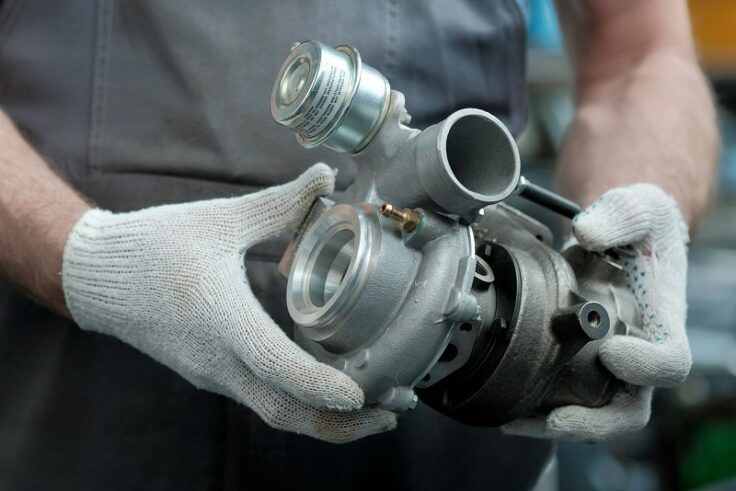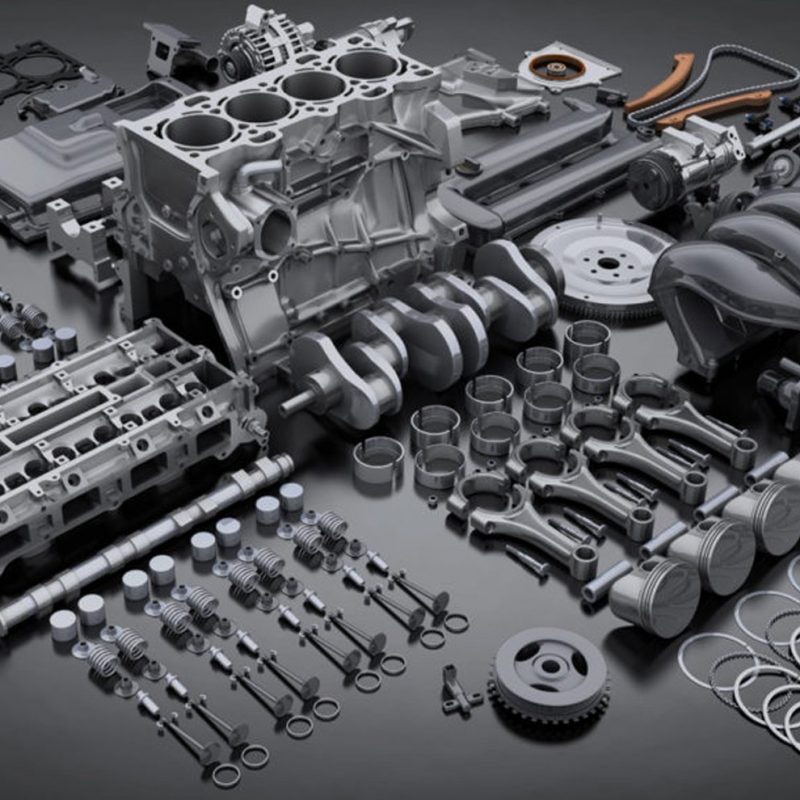Maximizing the ROI of Your Spare Parts Management Strategy
Maximizing the ROI of Your Spare Parts Management Strategy
I. Introduction
Spare parts management is the process of ensuring that the necessary spare parts are available when needed to keep equipment and machinery running smoothly. This includes identifying the right spare parts to stock, implementing a system for managing inventory, and optimizing the strategy to maximize the return on investment (ROI).
Effective spare parts management is essential for maintaining the reliability and availability of equipment and machinery, which in turn can lead to increased productivity, reduced downtime, and lower repair costs. Without a proper spare parts management strategy in place, organizations can face a number of challenges such as equipment breakdowns, lost production time, and higher repair costs.
To avoid these challenges and improve the efficiency of your spare parts management, it is important to understand the process and implement a system that works best for your organization. In this blog post, we will discuss the importance of spare parts management and provide tips on how to maximize the ROI of your spare parts management strategy.
II. The Costs of Poor Spare Parts Management
Poor spare parts management can have significant financial consequences for an organization. When spare parts inventory is not effectively managed, it can lead to lost productivity, increased downtime, and higher repair costs.
Lost productivity occurs when equipment or machinery breaks down and needs to be repaired or replaced. This not only results in lost production time, but also leads to additional costs such as overtime pay and lost revenue.
Increased downtime also results from equipment breakdowns, as it takes longer to repair or replace faulty equipment. This can lead to further lost productivity and additional costs such as overtime pay and lost revenue.
Higher repair costs can also result from poor spare parts management. When spare parts are not readily available, equipment or machinery may need to be repaired or replaced more frequently, resulting in increased repair costs. Additionally, if the wrong spare parts are purchased, it can lead to further repair costs as the incorrect parts will not fix the issue.
All these financial consequences of poor spare parts management can add up quickly, resulting in significant losses for an organization. Effective spare parts management, on the other hand, can help organizations minimize these costs and improve overall efficiency.
III. Identifying the Right Spare Parts to Stock
One of the most important aspects of spare parts management is identifying which spare parts are most critical to keep on hand. This will ensure that equipment and machinery can be quickly and easily repaired or replaced when necessary, minimizing lost productivity and increased downtime.
Here are some tips on how to determine which spare parts are most critical to stock:
- Analyze equipment usage patterns: By understanding how often equipment is used and for what purpose, you can determine which spare parts are most likely to be needed. This will help you to prioritize which spare parts to stock and in what quantities.
- Identify parts that are prone to failure: Certain spare parts are more likely to fail than others. By identifying these parts and keeping them in stock, you can reduce the risk of equipment breakdowns and the associated lost productivity and increased downtime.
- Consult with equipment manufacturers: Equipment manufacturers often have detailed knowledge of their products and can provide valuable insight into which spare parts are most critical to keep on hand.
- Utilize data analytics: Utilizing data analytics tools can allow you to identify patterns in equipment failure, usage, and maintenance which can be used to determine which spare parts are most critical and in what quantities.
By following these tips, you can ensure that you have the right spare parts on hand when they are needed, minimizing the risks of lost productivity, increased downtime, and higher repair costs.
IV. Implementing a Spare Parts Management System
Once you have identified the critical spare parts that need to be kept on hand, the next step is to implement a system for managing your inventory. There are several types of spare parts management systems available, including manual systems, computerized systems, and e-commerce platforms.
- Manual systems: These are the simplest and most basic form of spare parts management system. They involve manually keeping track of spare parts inventory using paper or spreadsheet. Manual systems are suitable for smaller operations with low volume and low complexity.
- Computerized systems: Computerized systems automate many of the processes involved in spare parts management, such as inventory tracking, reordering, and reporting. They are suitable for organizations with moderate to high volume and moderate complexity.
- E-commerce platforms: E-commerce platforms provide a way for organizations to manage their spare parts inventory online. These platforms can automate many of the processes involved in spare parts management, such as inventory tracking, reordering, and reporting. They are suitable for organizations with high volume and high complexity.
When choosing a spare parts management system for your organization, it is important to consider your organization’s specific needs and requirements. Additionally, it is important to ensure that the system is easy to use, flexible and scalable.
Once you have chosen a system, it is important to implement it effectively. This includes training employees on how to use the system, setting up procedures for regular inventory checks and updates, and regularly reviewing the system to ensure it is meeting your organization’s needs.
Overall, having a well-implemented spare parts management system can help organizations improve their efficiency, reduce costs, and ensure that the necessary spare parts are available when needed.
VI. Measuring and Improving the ROI of Your Spare Parts Management Strategy
Implementing an effective spare parts management strategy is important for maximizing the return on investment (ROI). However, to truly understand the impact of the strategy on your organization’s bottom line, it is important to measure and track the ROI.
There are several key metrics that can be used to track the ROI of your spare parts management strategy, including:
- Inventory carrying costs: This metric measures the costs associated with holding spare parts inventory, such as warehouse space, insurance, and taxes. By tracking this metric, you can see how changes to your spare parts management strategy are impacting your inventory carrying costs.
- Downtime costs: This metric measures the costs associated with equipment downtime, such as lost productivity and lost revenue. By tracking this metric, you can see how changes to your spare parts management strategy are impacting downtime costs.
- Repair costs: This metric measures the costs associated with repairing equipment, such as labor and parts. By tracking this metric, you can see how changes to your spare parts management strategy are impacting repair costs.
- Stockout costs: This metric measures the costs associated with stockouts, such as lost production and expediting costs. By tracking this metric, you can see how changes to your spare parts management strategy are impacting stockout costs.
Once you have tracked these metrics, you can use the information to make adjustments to your spare parts management strategy and improve results. For example, if you find that your inventory carrying costs are too high, you may need to review your inventory levels and adjust them accordingly.
By regularly measuring and tracking the ROI of your spare parts management strategy, you can ensure that your organization is getting the maximum benefit from its investment.
VII. Conclusion
In conclusion, spare parts management is an essential process for ensuring that the necessary spare parts are available when needed to keep equipment and machinery running smoothly. Effective spare parts management can lead to increased productivity, reduced downtime, and lower repair costs, ultimately maximizing the return on investment (ROI).
In this blog post, we discussed the importance of spare parts management and provided tips on how to maximize the ROI of your spare parts management strategy. We covered topics such as the costs of poor spare parts management, identifying the right spare parts to stock, implementing a spare parts management system, optimizing your spare parts management strategy, measuring and improving the ROI of your spare parts management strategy.
It is important to remember that effective spare parts management requires a combination of different strategies, including identifying the critical spare parts, implementing an appropriate system, utilizing data analytics, and regularly measuring and tracking the ROI of the strategy. With an effective spare parts management strategy in place, organizations can improve their efficiency, reduce costs and ensure that the necessary spare parts are available when needed.








